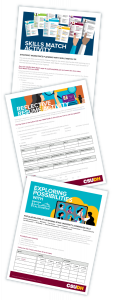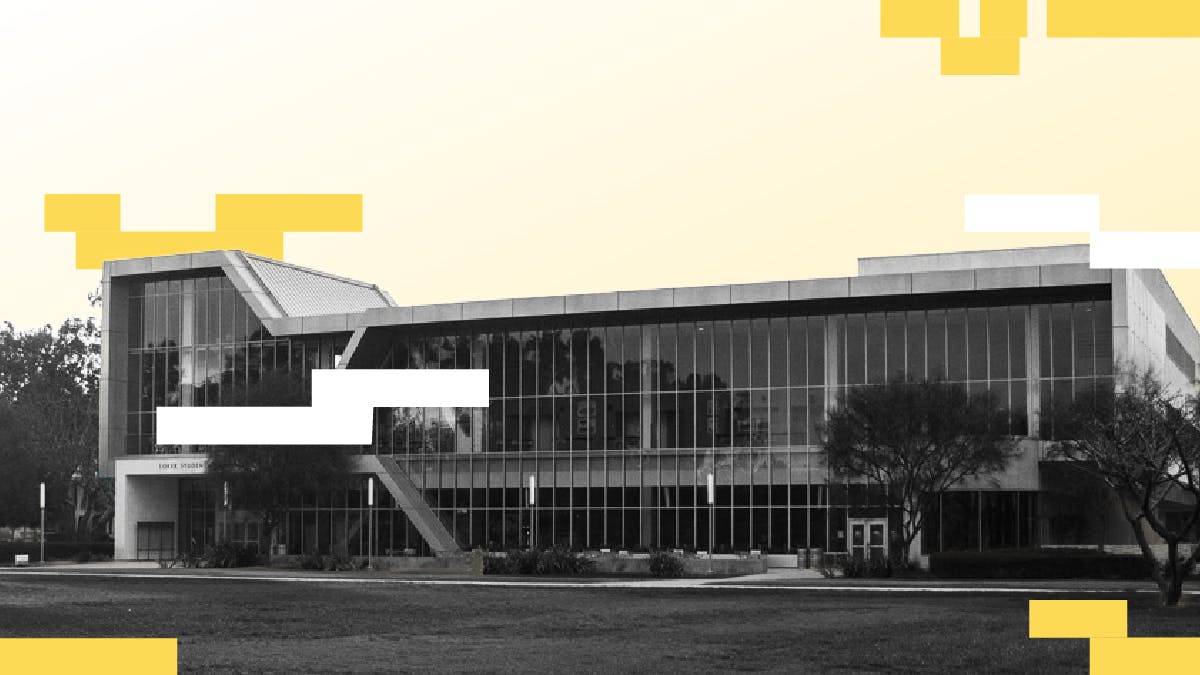Summary (Download)
Shifting career conversations to a skills-based language helps students understand that their skills are not limited by major.
To achieve this, California State University, Dominguez Hills uses SkillsMatch—a tool for students to inventory skills and explore career interests
Using game design principles, CSUDH integrates SkillsMatch with online activities designed to increase student engagement.
Now CSUDH is positioned to spark a campus-wide conversation about skills.
The best thing that Krystal Rawls teaches her students isn’t anything new at all: it’s helping them talk about the work-relevant skills they already have.
“As I’ve interacted with students,” she says, “I’ve measured their response to our skills activities. ‘I didn’t know I had those skills’ is the number one response. I just love that!”
As Workforce Integration Program Designer at California State University, Dominguez Hills (CSUDH), Rawls uses her experience in the classroom to create opportunities for increasing student engagement by pairing Lightcast's SkillsMatch with career development activities on campus.
Rawls’ work is contextualized for the needs of CSUDH students, so understanding the campus is the first step in understanding her approach.
Conversations within community
CSUDH is a community-focused institution. Located in the South Bay area of Los Angeles, the university serves one of the most diverse student populations in the United States. But although there are learners from varied backgrounds, many are first-generation students who tend to stay put after getting their degree. In fact, half of CSUDH’s graduates live within 25 miles of campus.

“When we say community, that’s important, because these students are going to be the future employees and business owners in this locality,” Rawls says. Oftentimes, a traditional approach to career planning means putting primary consideration on their major, which can mean that a student may need to move to find relevant job opportunities. To better help students who want to stay in the community but who still want to succeed in their careers, Rawls needed a different approach.
CSUDH partnered with Lightcast to become an early adopter of SkillsMatch—a tool created to help learners bridge their existing skills and interests with their career goals. After taking an inventory of their existing skills and interests, SkillsMatch can then suggest potential job options or identify educational opportunities that will help a student overcome a skills gap.
Because it’s based on Lightcast's Open Skills Library, a collection of work-relevant skill terms aggregated from job postings, online resumes, and professional profiles, SkillsMatch makes it easy for students to surface skills that they have developed over the course of their life.
“Much of our students’ skill base is built within family and community structures that are simply not reflected in academic or work experience,” Rawls explains, “but that doesn’t mean that they’re not developing skills.”
This shift to the language of skills and experience allows Rawls to help students situate their academic experience within the broader perspective of community and career.
Increasing student engagement with skills
Rawls uses her own life as an example. Using the language of skills, she shows students how her own background in Rhetoric and American Studies helped her develop the skills she uses in her current work. For many students, this is a new way of looking at skills and degrees.
“They’re shocked that I ended up in Institutional Research,” Rawls says. “[Lightcast] Skills gives this great platform to show that skills are not limited by major.”
As an early adopter herself, Rawls has put her skills in creative problem-solving and gamification to use, recognizing that the customized insights provided by data for each student are a great way to start conversations. SkillsMatch’s personalized career and educational recommendations give students a way to “window shop” for potential careers in an environment that’s free from judgment or expectations.
“You want it to be easy, fun, low-pressure interaction and engagement,” Rawls says. To entice student participation, she crafted a career-focused scavenger hunt.
Alongside traditional career-focused activities such as networking, Rawls designed scaffolded activities using fillable PDFs that guide students through an exploration of their skills, interests, career options, and potential salaries, using CSUDH’s custom SkillsMatch implementation and Lightcast's free online Resume Optimizer. Keeping with the low-pressure exploration, students turn in their findings only if they choose.
Despite launching in the middle of a pandemic, Rawls transformed the limitations of lockdowns into a springboard for innovation, capitalizing on the “lack of fun” to provide students an opportunity for play and exploration. By tracking the research done by students in SkillsMatch, Rawls has real-time feedback that she uses to identify students’ top skills interests and which activities they find most useful—valuable information to identify initiatives that can eventually scale institution-wide.
Transforming classroom and campus
As she influences CSUDH’s approach to skills and career development, early adopters like Rawls show that a small start can identify areas with potential for big impact. Rawls looks for creative ways to use existing processes on campus (and current events) as a starting point for rolling out a new approach to skills, while centering the conversation around the needs of her students.
Skills data provides a language. People spark and guide conversations. Together, those conversations can grow from the classroom, to the campus, the community—and the world of work.
If you’re interested in sparking similar conversations on your campus, learn more about SkillsMatch. To get started, let us know how we can help.

